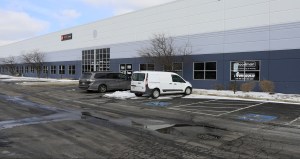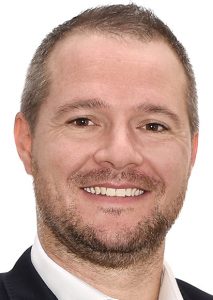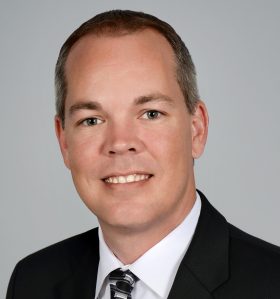Strategies for Harnessing Proptech in Industrial Property Management
Experts weigh in on how to match the tools to the goals of client service.

Image by Campaign Creators via Unsplash.com
For industrial property managers, a strategic approach to implementing property technology goes a long way toward maximizing the efficiency of a space and tenant satisfaction. According to experts, what is equally important to the [choice of] technology is a tailored, yet accessible and versatile property management technology platform.
One common priority is accessibility and ease of use for the technology and data analysis. Tushar Aggarwal, global head of business transformation and analytics at CBRE identifies this as the firm’s top priority for proptech adoption,
“Although we look at point solutions being integrated, it’s all about the user experience, and the customer experience we provide to the clients and tenants,” Aggarwal told Commercial Property Executive.
In real time, the service-oriented aspect of property technology that prioritizes tenant and user satisfaction extends to implementation. For Hiffman National, this role extends to duties such as equipment tracking and monitoring, with the recognition that the technology allows tenants to optimize operations.
“Our tenants are not in the management business,” said Chris Bosler, vice president of the firm’s Texas region. “They are focused on their day-to-day activities. What that allows us to do is track all that equipment for them.”
User-friendly values

When Hiffman National integrated this distribution center in Tinley Park, Ill., into its management portfolio, a transition-focused tool helped determine the best technology to provide tenants. Image courtesy of Hiffman National
As part of this approach, the firm has centralized its utilizations of the Building Engines platform for its material management duties such as maintenance, tenant tracking, HVAC monitoring and communications, all through a user-friendly interface.
“Our tenants are not on a computer; they’re usually in a warehouse or handling their day-to-day activities,” Bosler told CPE. “The interface needs to be user-friendly.”
In this spirit, Aggarwal cites the importance of keeping a level head, particularly regarding the myriad events that may arise at an industrial property, and the role of technology in addressing them. “It’s not a regimented program,” he noted. “There are all sorts of things that happen at an asset, and you have to be ready for anything that comes up,” he said.

Tushar Aggarwal. Image courtesy of CBRE
To this end, CBRE has developed Pulse, a front-facing, cloud-capable proptech centralization tool that enables access to readily available property information, such as regional and portfolio-based performance data. Additionally, it integrates programs alongside MRI Angus to its maintenance management capabilities, providing quick, easy-to-digest information to engineers and related personnel that in turn can be relayed to tenants.
Joe Stokes, chief product officer for CBRE Property Management, characterizes this strategy as based on relatively basic but reliable technologies that are applicable to the boots-on-the-ground nature of the job. “We really need to get the nuts and bolts right to solve real world problems,” he said. For CBRE, the basics take the form of accessible, accurate data.
Understanding limits

Sonya Huffman, Chief Administrative Officer, Link Logistics. Image courtesy of Link Logistics
Link Logistics embodies that idea in its proptech utilizations. The firm combines multiple technologies to create a distinct platform that integrates its management-related data and duties into an accessible, convenient network. “Many of the tools people build don’t talk to each other. When we talk about field personnel or operational utilization, we want our team to go to one place,” said Sonya Huffman, the firm’s chief administrative officer.
Link’s property management technology platform features best-in-class operating tools that are used to provide the team with a single source of truth. Link’s platform consists of Yardi for accounting, lease administration and construction management, Anaplan and Argus for budgeting and forecasting and Salesforce for business workflow and customer relationship management.
Despite the scale of its portfolio, the firm seeks to make its property services meet its tenants’ specific requirements. “(Link wants) to make sure that everything we are asking our hundreds of field personnel and accounting teams to utilize is intuitive, makes sense and is as simple as the technology they use in everyday life.” Huffman said.
Such an approach goes beyond physical technology. “All the members of our IT team have experience in real estate operations and real estate accounting,” Huffman told CPE. “They understand the suite of tools that are available, and they also have the business acumen to understand how making a choice is going to impact the way people operate.”
READ ALSO: Tapping Into the Rise of Renewable Energy
Future view

Joe Stokes. Image courtesy of CBRE
The various tools combine to form a versatile platform that allows Link’s property managers to access the information they need when they need it, without regard to its origin. “They don’t necessarily know that the engine is (from) Anaplan or Yardi,” Huffman noted. “They see one visualization, and they can layer in commentary on variance or budget, or questions about a lease within that one interface.”
At the same time, the emphasis should still be on in-person interaction; the technology is an assistant, not a replacement. “(For) people that are in that field, you want them to be at the properties talking to customers,” Huffman added.
The client-focused, centralized approach to technology is applicable to where the sector is headed, particularly in the use of automation and artificial intelligence. Link uses it to read through lease agreements, with the goal of delegating less mundane tasks to human property managers. “We want to make sure that the people running the business are performing the most valuable functions,” Huffman said.
Stokes sees the value of investing in new technology, but without compromising the service-centric nature of the business: “Over time, there will start to be a lot more thought around the hygiene factors, and how we actually deploy something that is going to solve a real-world problem.”








You must be logged in to post a comment.